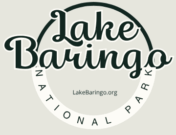Kenya’s Hidden Jewel in the Great Rift Valley
Lake Baringo National Park is one of the most diverse, peaceful, and biologically rich destinations in Kenya. Often overshadowed by the country’s famous big-game reserves, this freshwater lake in the northern Rift Valley offers a different kind of safari—one of intimacy with nature, quiet discovery, and raw natural beauty.
📍 Where is Lake Baringo?
- Location: Baringo County, north of Lake Bogoria, about 285 km from Nairobi
- Altitude: ~970 meters above sea level
- Landscape: Freshwater lake, volcanic islands, rocky escarpments, arid bushland, and papyrus swamps
- Climate: Semi-arid and warm throughout the year
🌿 Top Reasons to Visit Lake Baringo National Park
1. 🐦 World-Class Birdwatching
Lake Baringo is one of Africa’s top birding hotspots, with over 470 bird species recorded.
- Spot rare and endemic species like Jackson’s Hornbill, Hemprich’s Hornbill, and Three-banded Courser.
- Enjoy daily sightings of African Fish Eagles, Goliath Herons, kingfishers, bee-eaters, and sunbirds.
- Participate in guided birding walks or boat safaris with local expert guides who can identify hundreds of species by sight and sound.
📸 Birders often see 100+ species in a single day—one of the best birding success rates in Kenya!
2. 🚤 Unique Freshwater Boat Safaris
Unlike most Kenyan lakes, Lake Baringo is freshwater, making boat safaris a safe and rewarding experience.
- Watch hippos bobbing just beneath the surface.
- Spot basking Nile crocodiles on shorelines or rocks.
- Witness dramatic African Fish Eagle hunts, where guides lure birds to snatch fish mid-air.
- Explore volcanic Ol Kokwe Island, home to hot springs and traditional Pokot communities.
3. 🌄 Scenic Landscapes & Geological Wonders
The lake is set against a backdrop of the Tugen Hills and Laikipia Escarpment, offering dramatic views and hiking opportunities.
- Discover lava flows, cliff trails, and viewpoints ideal for photography and sunset watching.
- Visit hot springs and geysers on nearby Lake Bogoria (just 45 minutes away).
4. 🌍 Cultural Encounters with the Njemps People
Lake Baringo is home to the Il Chamus (Njemps), a unique community that practices both fishing and pastoralism.
- Visit traditional villages to learn about sustainable fishing techniques, food, crafts, and rituals.
- Witness local canoe-making or cultural performances arranged by community guides.
- Purchase handmade jewelry and crafts that directly support local families.
🧭 Cultural tourism here is authentic, respectful, and immersive.
5. 🐾 Diverse Wildlife (Beyond the Big Five)
Though it lacks large predators, Lake Baringo is rich in smaller wildlife:
- Hippos, crocodiles, warthogs, impalas, dik-diks, and vervet monkeys
- Rare nocturnal animals like White-faced Scops Owls, Nightjars, and bats
- One of Kenya’s best places for reptiles: snakes, monitor lizards, agamas, and geckos
🔎 Reptile walks and night safaris reveal surprising biodiversity in this dryland ecosystem.
6. 🧘♀️ Peaceful, Crowd-Free Safari Alternative
Unlike busy parks like Maasai Mara or Amboseli, Lake Baringo offers a quiet, tranquil experience:
- Perfect for couples, families, solo travelers, and photographers
- Lodges are small, eco-conscious, and often located directly on the water’s edge
- Fall asleep to the calls of owls and wake up to the sound of fish eagles
7. 🧭 Gateway to Other Rift Valley Attractions
Lake Baringo is an ideal base for exploring other northern Rift Valley destinations:
- Lake Bogoria (famous for geysers and Flamingos) – 1 hr away
- Kerio Valley & Tugen Hills – hiking, escarpment views
- Kapedo Hot Springs, Lake Turkana, and Maralal – for offbeat road trips
🛏️ Accommodation Options for All Budgets
| Lodge/Camp | Highlights |
|---|---|
| Island Camp Baringo | Upscale, island-based with lake views |
| Robert’s Camp | Budget-friendly, good for birders & families |
| Samatian Island Lodge | Eco-luxury and perfect for secluded getaways |
| Tumbili Cliff Lodge | Great views and ideal for photography |
📆 Best Time to Visit Lake Baringo
| Season | Experience |
|---|---|
| Jan–Mar | Dry, hot, great for reptiles and birding |
| Apr–May | Wet season, fewer tourists, green landscapes |
| Jun–Oct | Pleasant weather, great for birdwatching |
| Nov–Dec | Return of migratory birds, colorful sunsets |
🌤️ Lake Baringo is a year-round destination, but birders may prefer Nov–Apr for Palearctic migrants.
🧳 What to Bring
- Binoculars and bird guide (if birdwatching)
- Camera with zoom lens
- Light, breathable clothing + sun hat
- Refillable water bottle
- Insect repellent and sunscreen
- Good walking shoes or sandals
🦺 Travel & Safety Tips
- Do not swim in the lake due to hippos and crocodiles.
- Always go on boat rides with local guides.
- Carry cash—ATMs are limited and mobile money is more common.
- Respect local culture, especially in Njemps villages.
- Drive with caution—roads beyond Marigat can be rough in the rainy season.
🌿 Support Conservation Through Tourism
Visiting Lake Baringo helps support:
- Community tourism enterprises
- Local bird and nature guides
- Conservation of birds, reptiles, and aquatic ecosystems
- Preservation of Njemps culture and traditional knowledge
🔚 Final Thoughts: Why Lake Baringo is Worth the Trip
Lake Baringo is not just a lake—it’s a living classroom of biodiversity, a place where birds, reptiles, and humans have coexisted for centuries. It’s one of the best places in Kenya to slow down, reconnect with nature, and experience raw, unfiltered wilderness.
🪶 Whether you’re scanning the skies for rare hornbills, gliding past hippos on a canoe, or sitting by a campfire under the stars, Lake Baringo will stay with you long after you leave.
